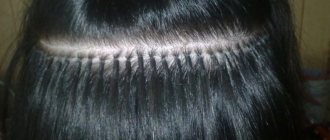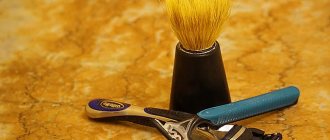Fine hairs on the body were not held in high esteem by fashionistas of Ancient Greece and Egypt. The ideal in those days was considered to be absolutely smooth skin, oiled with incense. In order to achieve these noble goals, the young ladies used all available means, including beeswax.
With the development of technology, the procedure for waxing has changed, but independent removal of unwanted hair is still in demand in the modern world, so wax strips are present as a must-have in every beauty’s home beauty box. Today FAN talks about the advantages and disadvantages of wax depilation, as well as how to properly and safely carry out this procedure at home.
pixabay.com/
What is the waxing procedure at home?
The waxing procedure, otherwise called “waxing,” is a process to which the expression “Beauty requires sacrifice!” is perfectly suited, because removing body hair with wax is accompanied by pain, and not everyone is ready to endure this. However, those women who tolerate this easily can do depilation at home without resorting to the services of cosmetologists. Especially when the most modern depilation products are at hand.
Let's list everything you need for waxing. In addition to the wax mixture itself, you will need dishes for melting hard wax, antiseptic solutions, a spatula for applying wax to the skin, and, of course, strips of fabric or paper, onto which excess hair is “transferred” during the depilation process.
Waxing at home is suitable for almost all areas of the body - legs, arms, superficial bikini area, as well as the face. As for the deep bikini, it is still better to entrust this area to a salon specialist.
It is important that the depilation process includes the removal of not only the hair shaft, but also the bulb and root, using a wax composition. The wax saturates the hair and “pulls” it out of the hair socket. That is why, after regularly repeating the procedure, the hairs in the treated areas become thinner and lighter, more invisible, and sometimes stop growing altogether.
Federal News Agency /
Contraindications
Before waxing, pay attention to the recommendations when not to do it. Following simple rules will help avoid possible complications. If you do waxing in a salon, you will most likely be warned and asked about any possible diseases. In the case of the home option, it is better to adhere to the general recommendations.
Waxing is not performed if the following contraindications exist:
- phlebeurysm;
- pregnancy and lactation (if a woman has not undergone such a procedure before pregnancy, you should not experiment while carrying a baby);
- diabetes;
- cuts and wounds on the body, skin diseases;
- bleeding disorders;
- infectious diseases.
Benefits of home hair removal
Home hair removal has undeniable advantages. First of all, it is attractive because the result after waxing lasts up to 3-4 weeks, depending on the intensity of hair growth.
Contrary to popular belief, home hair removal does not take much time. Once you have gotten the hang of waxing, the whole process will take no more than 15 minutes.
There is no need to leave your cozy apartment and go to a beauty salon. In the usual relaxing home environment, the depilation procedure can become even less painful and uncomfortable than with a cosmetologist: as they say, in your own home, even the walls help.
In addition, there is no need to wait for the depilation specialist to see you, and in addition, try to figure it out so that the appointed time fits comfortably into your plans for the day and week. With home hair removal, you decide when you are ready to carry out the procedure.
When depilating at home, you are convinced that the wax mixture consists of natural ingredients and is optimal for you, since you purchase it yourself or, alternatively, prepare the wax at home.
Finally, with home waxing, you can spend as much wax on yourself as you think is necessary and still benefit economically. As for the salon master, he, as is known, earns not only for himself, but also for the owners of the establishment, and all this, of course, does not have the best effect on the cost of the procedure.
Preparation
You need to carry out the procedure at home when the hair length is 5-6 mm. If they have previously been shaved or plucked, you need to wait until they grow to this size. The skin of the face must be clean: inflammation, rashes, wounds and scratches are not allowed.
Before waxing, it is necessary to carry out the following activities:
Make an appointment with an allergist to find out your tolerance to the chosen hair removal products.
3 days before the procedure, reduce your time in the sun and do not visit the solarium.
A day before epilation, treat the skin with a scrub. The substance will cleanse the epidermis of the top layer of dead cells and increase wax adhesion. You can use a mixture of honey and coffee grounds as a scrub.
After preparing the preparations for use, steam your face over a bowl of chamomile or celandine infusion. Dry the skin with a towel, wipe it with an alcohol solution. Enlarged pores will ensure better penetration of wax to the bulbs. Treat problem areas with talcum powder to prevent them from becoming contaminated with sweat and fat secretions.
Take a pain reliever.
Disadvantages of home waxing
However, the home hair removal procedure also has certain disadvantages. Thus, home waxing, like salon waxing, can only be done on hairs that are at least 3–5 mm long. For shorter ones, the procedure is not carried out, since the “adhesion” will not be enough to remove them.
In addition, when waxing, as already mentioned, you will have to endure pain to one degree or another. Unfortunately, it will not be possible to completely avoid pain. If you are characterized by above-average sensitivity or have previously noted slight damage to the capillaries, then waxing should be replaced with something else.
It is worth listening to the recommendations of doctors and not resorting to waxing if you have diabetes, varicose veins, numerous boils and some other diseases and conditions. Also, in some cases, allergic reactions to the components of the wax composition are possible. It is best to find out how the body will behave in advance. To do this, you need to test the product by requesting a trial portion from the seller.
The process of removing hair using strips requires confident actions: sharp and strong movements. Otherwise the effect will be incomplete.
After waxing, sometimes not all hairs are removed and you have to pull out the hair follicles with tweezers. In addition, some hairs grow under the skin and inflammation of the follicles occurs.
Another indisputable disadvantage of the procedure is the high probability of burns: if you choose the “hot” waxing method, you need to carefully monitor the temperature of the composition.
Finally, quality home waxing, at least for the first time, will require significant preliminary preparations. For example, to heat up the wax composition, it is best to purchase special dishes. The product should also be applied with a special brush or cosmetic spatula.
pixabay.com/
Pros of waxing before shaving
Waxing has an advantage over shaving because it removes hair from the root.
Waxing has an advantage over shaving because it removes hair from the root. When you shave, you simply cut off the hairs, and after a couple of hours you can already see hair growing back or bluish shadows from the hair follicles under the skin in the shaved area. In turn, the effect of wax hair removal not only lasts up to one month (editor's note: on average 2 weeks), but it is also more permanent: over time, the hairs become thinner and their growth slows down. Plus, waxing helps exfoliate dead skin cells, leaving your skin soft and smooth for longer.
If you are concerned about possible pain, you can take a painkiller an hour before the session. It is also recommended to apply an exfoliating scrub the day before your session and not use body lotion on the day of your session. It is also not recommended to use antiperspirant for the armpit area, so as not to reduce the effectiveness of the procedure.
Types of waxing
Traditional, one might say, the most ancient, depilation was carried out with molten hot wax. Today's technologies make it possible to remove hair not only with a hot composition, but also with a warm and even cold one.
- Hot wax will require close monitoring of the heating temperature; it should not be higher than 60°C, otherwise you can get a skin burn. Remember also that if the procedure takes too long, the wax cools down and needs to be warmed up.
- Warm wax should be 10-20°C lower in temperature than hot wax. In this case, the temperature can be controlled by hand: if it becomes uncomfortable, remove the wax from the heat. For the warm wax procedure, wax in a jar or granular product is most often used.
- Cold wax does not need to be heated at all; it is produced in the form of special strips of durable paper impregnated with a wax composition. The strips are small in size and are most often used to remove hair above the upper lip, arms and legs.
Types of epilation of the bikini area
Generally accepted standards:
- Classic . Unwanted hairs that protrude beyond the area of a standard swimsuit are removed. The area bordering the thighs and buttocks, the strip on the stomach to the navel.
- Average . Hairs are removed from the area of open swimsuits. Vegetation remains on the pubis and perineum.
- Deep . All hairs in the intimate area are removed.
Types of wax for home depilation
Wax for different methods of depilation is supplied not only in cans, but also in other containers and can be varied in its structure, on which the packaging option for the product largely depends.
- Wax in 250–500 ml jars is convenient for home use. In the usual “factory” state it is solid, and for the procedure you can heat the entire volume or a certain portion of the product. Wax is most often packaged in jars for “hot” and “warm” procedures.
- Wax cartridges are small rectangular plastic boxes filled with wax of a semi-liquid consistency. This composition does not need to be melted; it is ready for application at room temperature. One side opens and closes with a lid. The main thing is not to spill such liquid wax on clothes and furniture, because it is not so easy to wipe off.
- Granulated wax is a product in the form of small loose particles; it is heated in special containers or in a ceramic bowl in the oven. The granules resemble cereals; this product is very easy to measure, pour into a bowl, and convenient to store.
- Film wax is a composition for “hot” depilation. Its thin layer hardens perfectly and retains plasticity and flexibility, which allows during the procedure to take into account all the anatomical “details” of the treated areas of the body.
- Finally, a popular type of product is wax strips . They are sold in pharmacies and cosmetic stores and are packaged in small boxes. The strips come in different lengths and shapes and are made from durable fabric. To perform depilation, you just need to stick them on the problem area of the skin without heating them, and then sharply tear them off along with the unwanted hair.
pixabay.com/
Care after waxing
It is not allowed to take water treatments or be exposed to direct sunlight for six hours after waxing.
Immediately after the session you will notice the result: perfectly smooth skin without unwanted hair. The effect will last for two to three weeks. If you want to get rid of lint completely, repeat about six waxing sessions using hot or warm resin. Each time the new hairs will become paler and thinner. It is recommended to maintain an interval between procedures of at least 15 days.
Another advantage of wax hair removal is the absence of a machine. All you need is wax. Contact a professional to achieve quality results. Choose a type of resin along with it, based on the condition of your hairs, skin type and area of depilation.
We recommend
Laser hair removal of armpits: answers to the 8 most popular questions about the procedure Read more
To avoid unpleasant side effects after the procedure, follow these rules:
- Do not visit the sauna, bathhouse or solarium for two days after waxing.
- Do not expose the epilation area to direct sunlight, use protective equipment.
- If unwanted hairs appear long before the next session, remove them with tweezers or using depilatory cream.
There are treatments that can help slow down the growth of bristles. They are carried out only by specialists in beauty salons. One of them involves applying to the skin a product containing ions, which, under the influence of ultrasound, penetrate the dermis. As a result, perfect smoothness will please you longer.
Another way to prevent the growth of unwanted hairs is special products in the form of emulsions and lotions. They have a negative impact on the development of follicles. Using them, you can increase the interval between waxing sessions, and then get rid of hair forever.
The advantages of waxing are difficult to overestimate. The procedure is hypoallergenic due to the natural components of the products used, which means it is suitable for any skin type. You may experience side effects such as dryness or irritation, notice ingrown hairs or small pimples, but most often the cause of these symptoms lies in the incompetence of the specialist.
How to melt depilatory wax
The question often arises: what can you use to heat up the hair removal composition at home? There are several ways to heat up wax, we list them below.
- Warming up with a wax melter . A special device - a wax melter - usually has double walls - plastic on the outside and metal on the inside. The convenience of the wax melter lies in the fact that it is equipped with a temperature regulator and is able to maintain a given mode throughout the entire depilation procedure. Most often, this device is used in salons where large volumes of wax need to be heated.
- Reheat in the microwave. It is enough to heat some wax products in a regular microwave; you can find out about this by reading the instructions.
- Warming up in a “steam bath” . If you don’t have a wax melter, you can melt the wax by simply placing the jar of the product in a container of hot water.
- Manual heating is suitable for a “warm procedure”. The required amount of wax should be rubbed with your palms until your body temperature reaches 36.6 °C; for certain types of wax this is quite enough.
What wax is used for hair removal?
Waxing requires preparation, and you should start with choosing the material. Regardless of where the procedure is performed (at home or in the salon), there are several types of resin: hot, cold and warm. They are different from each other, each has certain competitive advantages.
- Hot wax.
The technology of hair removal using hot wax resin is considered the most correct and allows you to achieve high-quality results. For this reason, masters in beauty salons use this particular type of material. Contains: pine resin and petroleum products. In its original form, the raw material itself is solid. To melt it, special heaters are used.
There are several types of hot wax. One of them is film. It is granular, after melting it is applied to the skin using a special roller or spatula, and removed with a cloth or paper strip.
Deep waxing of sensitive areas is noticeably more painless when using hot resin. The high temperature material helps to open the pores, which allows you to pull out the hair along with the root.
Please note that it is not recommended to perform waxing at home using this method. In the absence of experience, it is very difficult to calculate the comfortable temperature of the material. As a result, you may get burned.
We recommend
Laser hair removal of the abdomen: contraindications, features of the procedure and care Read more
- Cold wax.
To carry out waxing at home, a type of cold resin was invented, thanks to which the procedure is greatly simplified: you only need to heat the material to a comfortable temperature in your palms or by any other convenient method. Cold wax raw materials can be purchased in the form of a liquid mixture or already impregnated strips.
Please note that you need to choose based on your skin type. If the product is determined correctly, the procedure will be effective and you will be able to remove even small hairs from a wide variety of areas. If you have little time, but want to get a high-quality result, feel free to choose cold wax.
- Warm wax.
It is a solid material containing oils of plant origin. They serve as softeners for the wax base. Raw materials are sold in liquid form or in special cartridges. As for the last option, heat it up using a water bath or in appropriate wax melters.
The advantages of this type of material are, first of all, comfort and ease of use. The result after the session is of high quality, comparable to the use of hot raw materials. Suitable for absolutely any area, but especially popular during waxing of arms to elbows and legs.
How to properly do waxing at home?
Beginning “home cosmetologists” have many questions about the procedure. For example, what can and cannot be done before and after hair removal? Let's tell you everything in order.
On the eve of depilation, about a day before, it is not recommended to sunbathe or perform peeling. If you want to reduce pain during the procedure, use the “hot” hair removal method. Heat helps relieve the pain of depilation. In addition, heated wax perfectly removes root follicles, as it penetrates quite deeply into the pores enlarged by the heat.
How to use wax strips for depilation? Small strips are most often used for facial waxing, for example, above the upper lip. It takes just minutes. The strip should be warmed up in the palms with a quick stroking motion. Then you need to remove the protective film from it and quickly apply it to the skin. Thus, proper depilation with wax strips requires not only correct application, but also the correct ratio of the size of the strip and the surface area of the skin from which hairs need to be removed.
Waxing of the armpits can be done just as quickly. When depilating hands, the part of the arm from the hand to the elbow is usually treated - the area of greatest hair growth. Waxing your legs will take longer. And finally, bikini depilation is the most sensitive procedure. As already mentioned, with the help of home waxing it is recommended to remove hair only from visible areas of the skin along the panty line, but for a deep bikini you will need the hand of a master.
Advantages and disadvantages
When choosing an appropriate method of dealing with unwanted hair, women study reviews and weigh the pros and cons.
The positive aspects of deep bikini waxing include:
- High processing speed. An experienced master performs the procedure in 15-25 minutes. This time includes the process of preparing the skin and applying special soothing agents afterwards.
- Affordable price. Hot wax is cheaper than sugaring . These methods are similar in effectiveness.
- After the procedure, the skin remains smooth and well-groomed for 3-5 weeks.
- The composition cleanses the surface of keratinized particles. In addition to wax, cosmetics with useful ingredients are used during the session. The skin becomes smooth, moisturized and elastic.
Negative points:
- Clients feel embarrassed when treating delicate intimate areas.
- Painful sensations. The area is especially sensitive during the first 1-3 visits to the salon. Later the skin gets used to it.
- Waxing is not forever. You need to visit the salon every few weeks.
- To repeat the procedure, you need to grow hairs 3-5 millimeters long.
Stages of hair removal using wax at home
- The first stage is cleaning the skin and preparing for waxing. First make sure that there are no wounds or deep scratches on the surface of the skin. We carefully cover moles and warts with adhesive tape; it is better not to apply wax to them. How should you treat your skin for better results? Firstly, an antiseptic to eliminate germs and bacteria, since depilation in any case injures the skin. Secondly, a degreasing agent so that the wax “sticks” to the surface better and captures the hair follicles.
- The second stage is the direct application of the wax composition. If you need to warm it up, then warm it up. If these are strips, then glue them on and press them to the body. All products should be applied strictly in the direction of hair growth, nothing against it. Let the applied wax sit for about 1-2 minutes.
- The third stage is wax removal: actually, depilation itself. Removal of the strips should occur with a sharp, quick movement against the growth of hairs.
- The fourth stage is wax removal. Wax masses of different consistencies require different approaches to its removal. Liquid wax is removed with a spatula or spatula. The solid, as a rule, remains on the skin only in small quantities, so you can even simply shake it off with your hand. You can also wash off the wax remaining after depilation with warm water.
- The fifth stage is treatment of the depilation area after the procedure. Do not neglect this step to avoid unnecessary inflammation. You can wipe your skin with chlorhexidine, which is in every first aid kit, or use lotion, micellar water or liquid cream.
pixabay.com/
What could be the consequences?
If the waxing technique is performed incorrectly, the following unpleasant consequences may occur:
- dryness, dehydration of the skin;
- ingrown hairs;
- skin redness;
- irritation;
- inflammatory process;
- skin burns;
- red and black pimples;
- pustules;
- hyperpigmentation;
- bruises and bruises;
- abrasions.
If the skin is damaged and there is no personal hygiene, the body may become infected, which can lead to an abscess, sepsis and ultimately death. To avoid complications, it is necessary to consult with a specialist before the procedure, properly prepare for depilation and follow all recommendations for skin care in the post-epilation period.
Common mistakes during home waxing procedures
Inexperienced home cosmetologists often make mistakes when carrying out the procedure, which negatively affects its effectiveness. For example, they do not clean the surface of the skin well enough from dust, dirt and grease, so the composition does not stick well and does not capture hairs.
Also common mistakes include applying too thin a layer of wax composition. You should not save too much here, since the volume of wax should be enough to completely saturate the hair follicle and shaft.
The wax mass is often pulled in the wrong direction - that is, along the growth of the hair, so the hairs do not come off. Also, you should not remove it too slowly: the pain will not decrease with a more “gentle” tearing of the strips, but unwanted hairs will certainly have time to slip out of the wax in this mode. And finally, a typical mistake is to perform depilation on insufficient hair length: short hair will be very difficult to completely “fill” with wax.
Consequences and ways to eliminate them
The waxing procedure may be accompanied by undesirable reactions that occur during or after the procedure.
There are these types of complications and ways to eliminate them:
Swelling and redness of the skin. The reason may be an allergic reaction, insufficient preparation for the procedure, or the individual susceptibility of the body to thermal and mechanical influences. You can relieve irritation with sunburn cream, healing ointment, or hydrogen peroxide.
Sharp pain when tearing off strips. The reason is that the nerve endings are close together or the wax is removed from the skin too slowly. In the first case, you need to take a painkiller or a small dose of alcohol. Sharply tearing off the strip will reduce the duration of the pain syndrome and reduce its intensity.
Stiff stubble grows in areas where wax is applied. This phenomenon indicates that the bulbs were not removed and the hair was torn. The body's response is to grow thicker hair. You should use a different type of wax or switch to a new type of therapy.
If you cannot solve the problem yourself, it is recommended to consult a professional cosmetologist.











